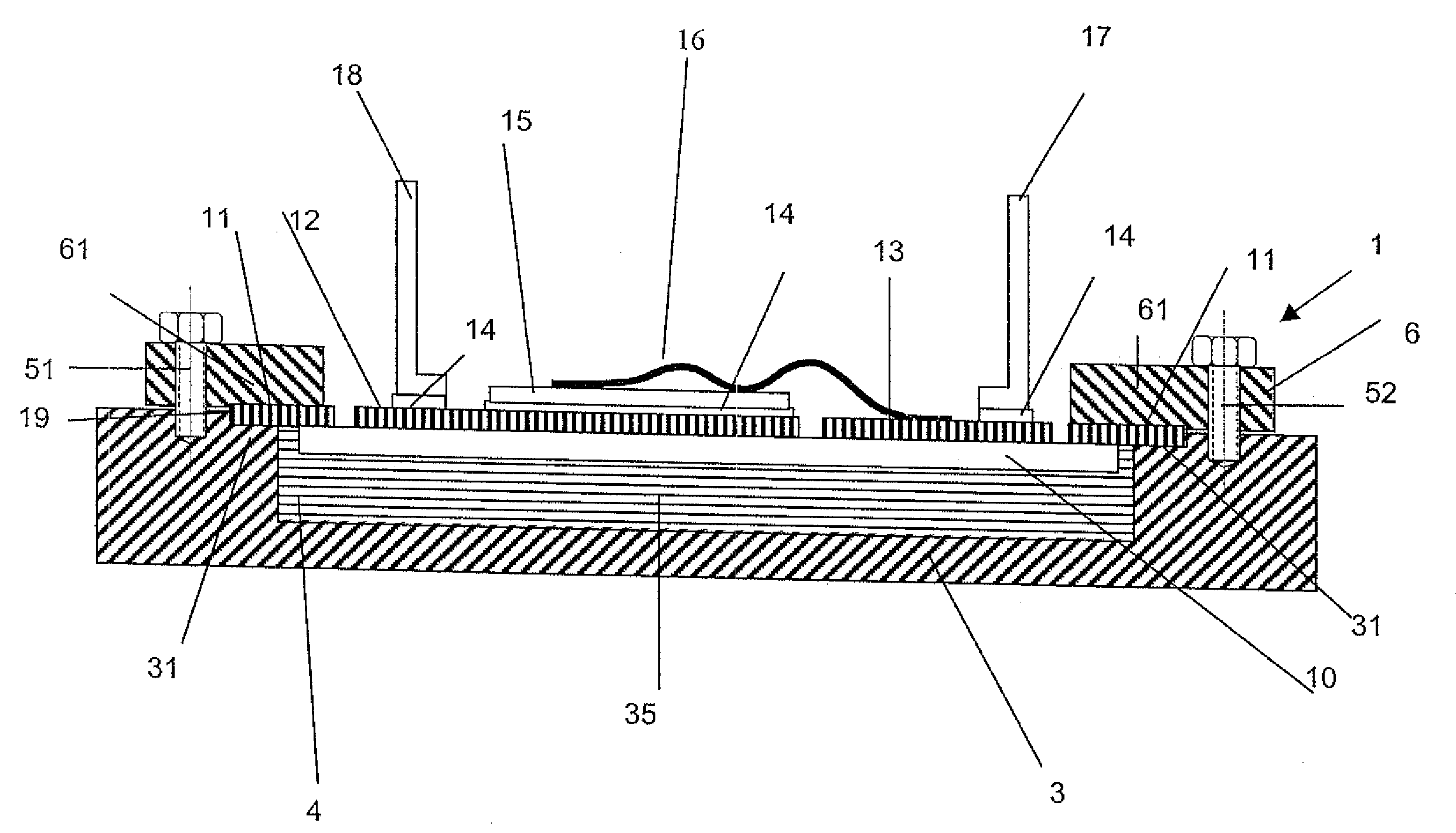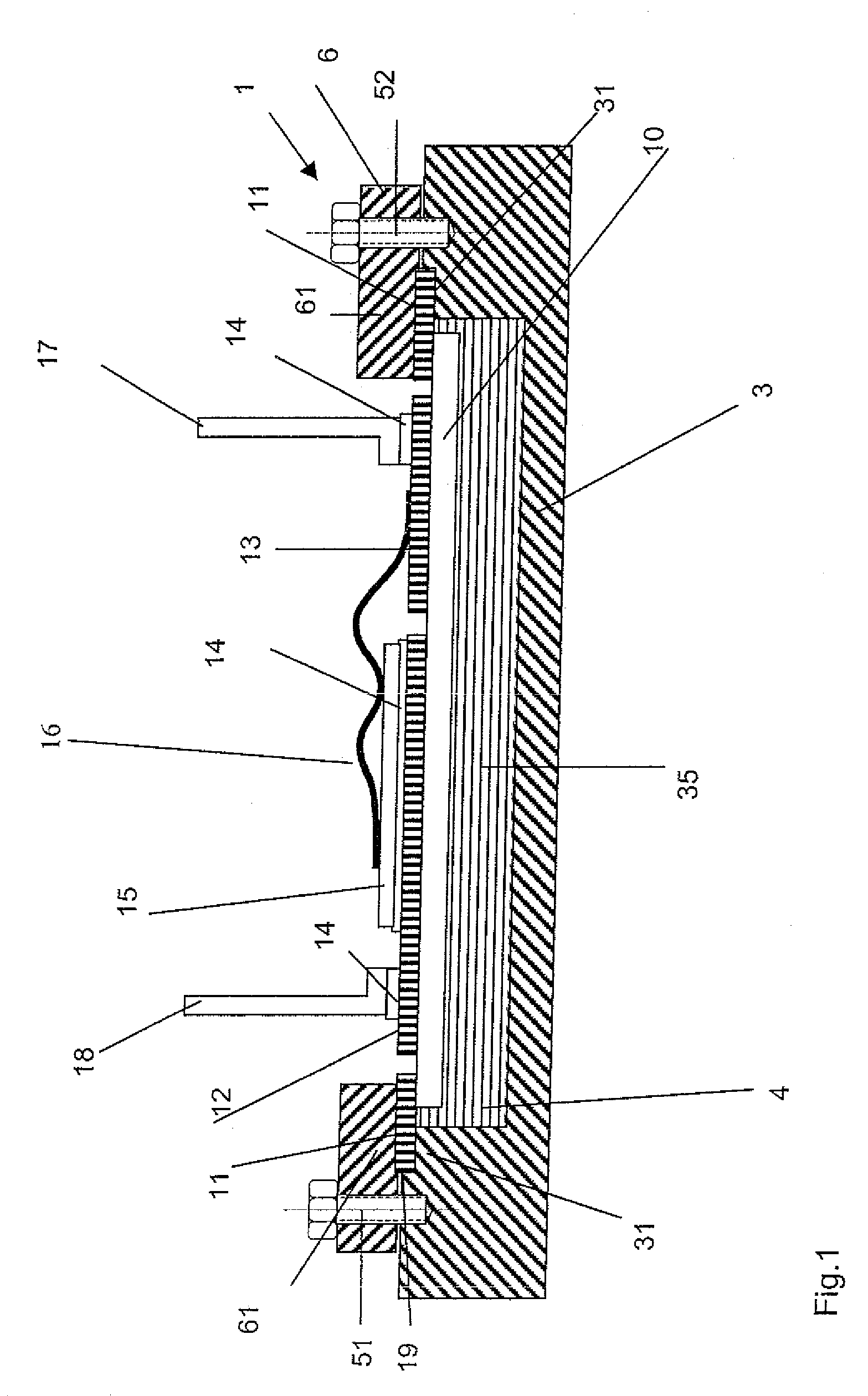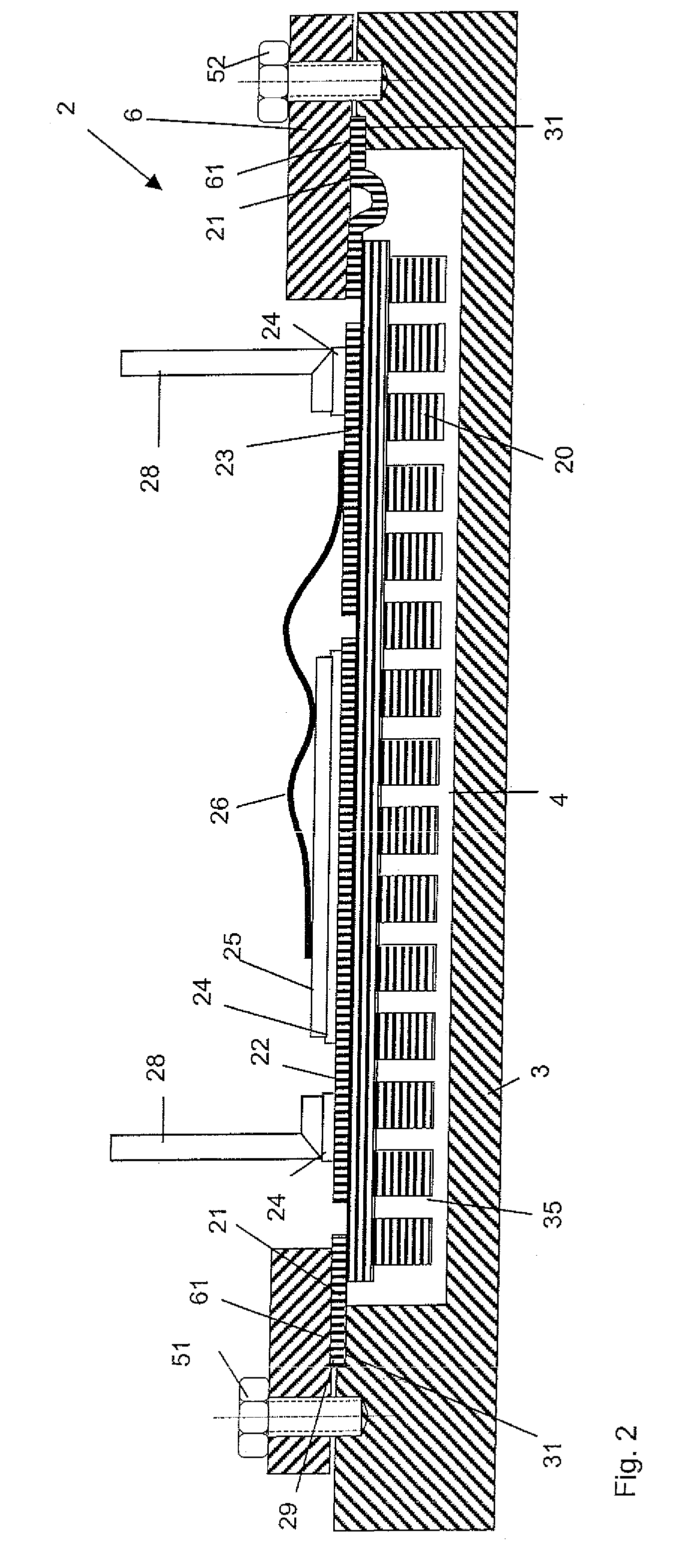Power electronics assembly with cooling element
a technology of electronic assembly and cooling element, which is applied in the direction of power cables, lighting and heating apparatus, cables, etc., can solve the problems of reduced cycle strength, thermal stress and breakage of the insulating substrate, and increase the risk of assembly breakage, so as to achieve the effect of improving the structur
- Summary
- Abstract
- Description
- Claims
- Application Information
AI Technical Summary
Benefits of technology
Problems solved by technology
Method used
Image
Examples
Embodiment Construction
[0026]FIG. 1 shows a power electronic arrangement 1 with a cooling element 3, a clamping frame 6 and an insulating substrate 10.
[0027]The insulating substrate 10 is a ceramic substrate in plate form, the thickness of which is greater than 0.1 millimeter. Preferably the insulating substrate is of a thickness of between 0.2 and 4 millimeter. The insulating ceramic preferably comprises aluminum oxide, aluminum nitride, boron nitride or silicon nitride. It is also possible for the insulating substrate 10 to comprise a plastic material or a plastic material which is filled with ceramic.
[0028]On its top side the insulating substrate 10 is provided with a metal layer portion 19 which is bonded on to the insulating substrate or soft-soldered, actively soldered or brazed or laminated on to the insulating substrate. The metal layer portion 19 forms on the insulating substrate 10 a plurality of metallisation surfaces of which two metallisation surfaces 12 and 13 are shown in FIG. 1. Arranged o...
PUM
| Property | Measurement | Unit |
|---|---|---|
| thickness | aaaaa | aaaaa |
| thickness | aaaaa | aaaaa |
| thickness | aaaaa | aaaaa |
Abstract
Description
Claims
Application Information
 Login to View More
Login to View More - R&D
- Intellectual Property
- Life Sciences
- Materials
- Tech Scout
- Unparalleled Data Quality
- Higher Quality Content
- 60% Fewer Hallucinations
Browse by: Latest US Patents, China's latest patents, Technical Efficacy Thesaurus, Application Domain, Technology Topic, Popular Technical Reports.
© 2025 PatSnap. All rights reserved.Legal|Privacy policy|Modern Slavery Act Transparency Statement|Sitemap|About US| Contact US: help@patsnap.com



